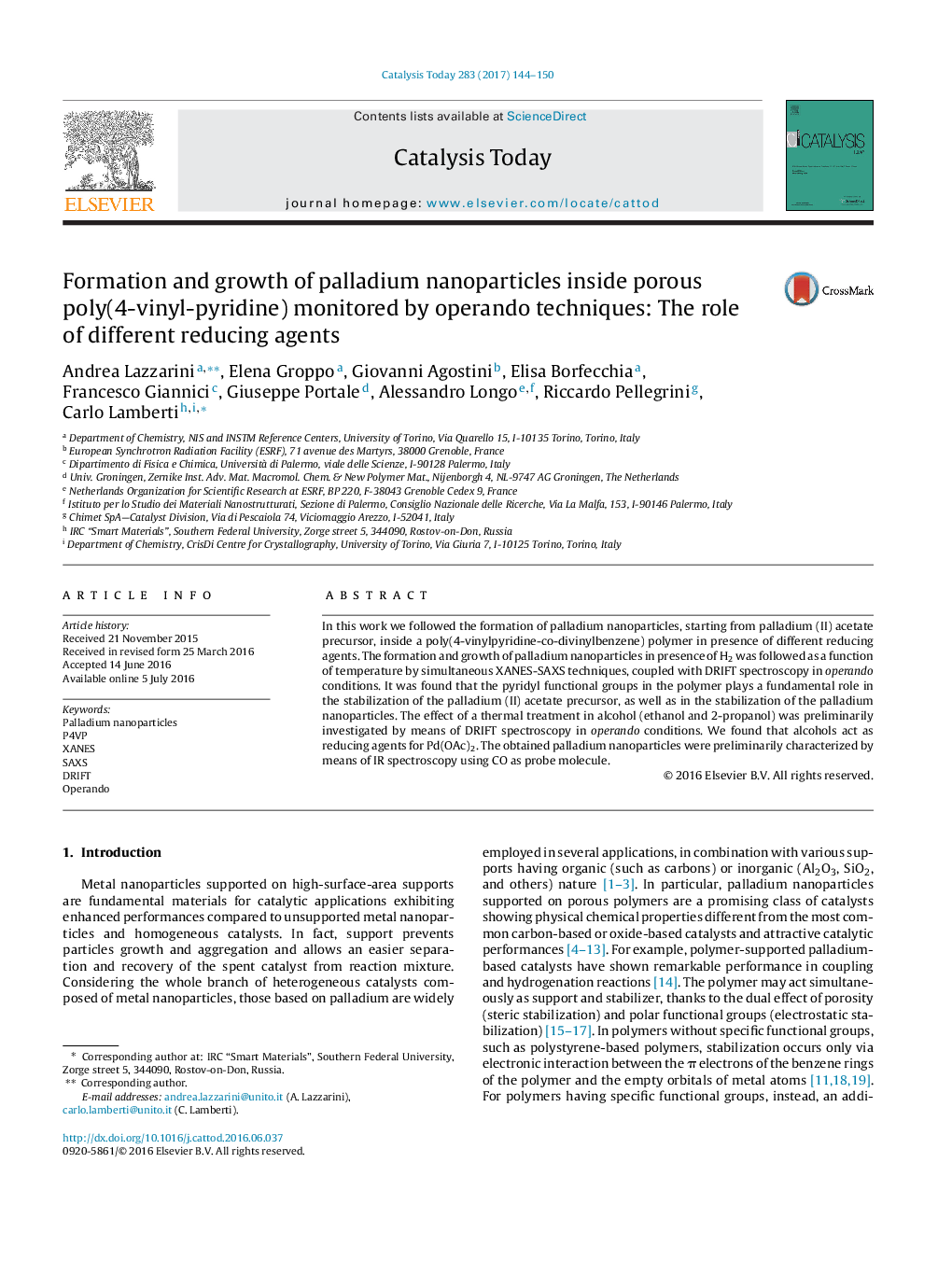| کد مقاله | کد نشریه | سال انتشار | مقاله انگلیسی | نسخه تمام متن |
|---|---|---|---|---|
| 6455278 | 1419172 | 2017 | 7 صفحه PDF | دانلود رایگان |
- Operando H2-reduction of Pd(OAc)2 in P4VP was followed by SAXS/XANES/IR.
- Combined SAXS/XANES shed light to both Pd oxidation state and particle size.
- Interaction of Pd(OAc)2 in P4VP with EtOH and IPA was followed by operando DRIFT.
- Interaction of Pd(OAc)2 in P4VP with EtOH and IPA is not “innocent”.
- H2-reduction of Pd(OAc)2 in P4VP is compared with EtOH and 2-propanol.
In this work we followed the formation of palladium nanoparticles, starting from palladium (II) acetate precursor, inside a poly(4-vinylpyridine-co-divinylbenzene) polymer in presence of different reducing agents. The formation and growth of palladium nanoparticles in presence of H2 was followed as a function of temperature by simultaneous XANES-SAXS techniques, coupled with DRIFT spectroscopy in operando conditions. It was found that the pyridyl functional groups in the polymer plays a fundamental role in the stabilization of the palladium (II) acetate precursor, as well as in the stabilization of the palladium nanoparticles. The effect of a thermal treatment in alcohol (ethanol and 2-propanol) was preliminarily investigated by means of DRIFT spectroscopy in operando conditions. We found that alcohols act as reducing agents for Pd(OAc)2. The obtained palladium nanoparticles were preliminarily characterized by means of IR spectroscopy using CO as probe molecule.
168
Journal: Catalysis Today - Volume 283, 1 April 2017, Pages 144-150
